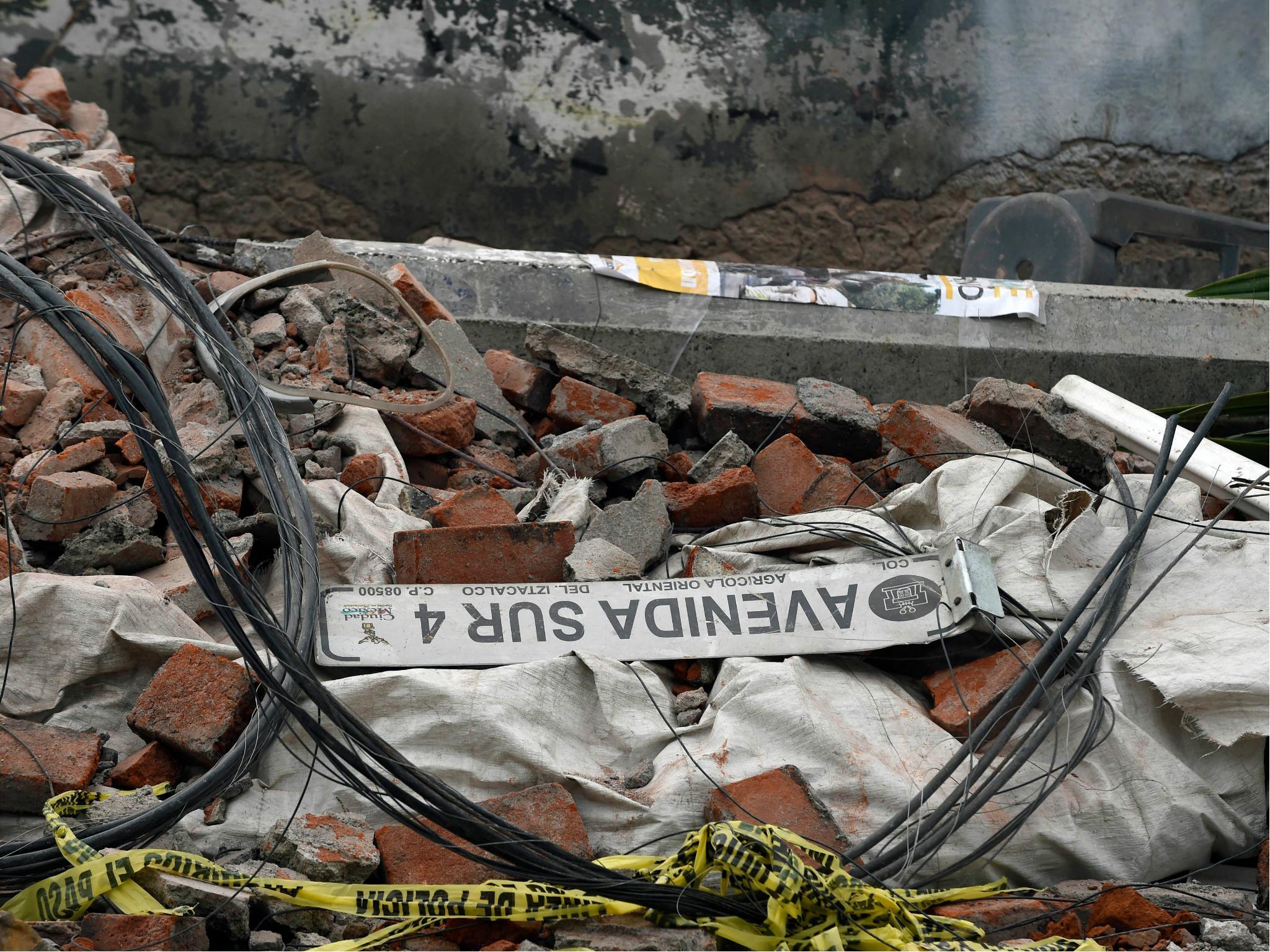Mexico earthquake kills at least 61 and is felt by 50 million people across country
It is the strongest earthquake to hit the country in a century

Officials in Mexico are scrambling to respond to a 8.1 magnitude earthquake off the country’s southern coast that has killed at least 61 people and triggered tremors across the region.
The most powerful earthquake to strike in around 100 years saw with tremors reported from Mexico City to San Salvador to the south.
Evacuations, massive damage to infrastructure, and alerts were triggered as far away as south-east Asia.
The epicentre was 74 miles (119 km) into the Pacific Ocean, approximately 600 miles southeast of Mexico City, at a depth of 43 miles.
Jana Pursely, a geophysicist at the US Geological Survey, told CNN that the quake was relatively shallow, which resulted in more “intense shaking”.
Mexican President Enrique Peña Nieto said between the initial quake and aftershocks at least 50 million people of the country’s 120 million population felt it.
It hit as most residents were sound asleep around midnight on Thursday night, forcing many out into the streets in their nightclothes, uncertain of where to go as everything around them appeared to be on the brink of collapse.
Mr Pena Nieto said on Friday evening in a televised address that at least 61 people were killed - 45 in Oaxaca state, 12 in Chiapas and 4 in Tabasco - and he declared three days of national mourning.
The worst-hit city was Juchitan, on the narrow waist of Oaxaca known as the Isthmus, where 36 quake victims died.
About half of Juchitan's city hall collapsed in a pile of rubble and streets were littered with the debris of ruined houses. A hospital also collapsed, Mr Pena Nieto said after touring the city and meeting with residents. The patients were relocated to other facilities.
Juchitan Mayor Gloria Sanchez said: “The situation is Juchitan is critical; this is the most terrible moment in its history.”
There are reports of at least four people being trapped in a hotel that was damaged in the earthquake as well.
Chiapas, the other state bordering the epicentre, reported several collapsed homes and three dead.
In Tabasco, two children were reported dead as a result of a crumbling building.
However, the death toll appears to be less than a devastating 1985 earthquake that killed almost 10,000 people in four Mexican states though it was not nearly as powerful.
That quake was more deadly because it had hit much closer to Mexico City, one of the world’s most densely populated cities.
As Mexico deals with the infrastructure damage, only fully known in the harsh daylight, there was also a tsunami set off by the ocean-based earthquake.
Though the waves seem to have only reached approximately three feet, the National Weather Service’s Pacific Tsunami Warning Centre said they could reach up to 10 ft.
Nevertheless, Mr Peña Nieto said operations at the Salina Cruz refinery close to the epicentre have been suspended and Pemex, the state-owned petroleum company, is conducting reviews of operations.
Though the damage is less severe than expected for such a massive quake, at least one million have been left without power in various neighbourhoods Mexico City alone and the airport reported shattered windows.
A full minute of tremors even rocked the city’s Angel of Independence monument as one Twitter user’s video shows.
Overall, approximately 1.85 million homes lost electricity or water services.
Authorities have advised people to check buildings and homes for possible gas leaks as well.
Since the 1985 quake, the country has employed as strict construction codes as the US and Japan in order to minimise infrastructure damage in a place that lies on two tectonic plates – the Cocos and North American – and is susceptible to such events.
The plates shift against each other about three inches each year and as friction builds, the plate breaks along a fault line causing earthquakes and tsunamis.
Called a “subduction zone”, several can be found on the perimeters of the Pacific Ocean, according to The New York Times.
These zones are the cause of some of the deadliest quakes and tsunamis.
Recent examples include the the 9.0 magnitude earthquake off the coast of Japan in 2011, which caused the nuclear disaster in Fukushima.
In 2004 nearly a quarter of a million people died in Indonesia, Malaysia, Thailand, India and other Indian Ocean countries as a result of the 9.1 quake near Indonesia which spurred a massive tsunami.
Mexico’s army, marines and federal police have been deployed for disaster relief efforts.
Schools and offices in 10 Mexican states have been ordered closed until infrastructure damage is surveyed.
“We are assessing the damage, which will probably take hours, if not days ... But the population is safe over all. There should not be a major sense of panic,” Mr Peña Nieto assured citizens in the early morning hours.
Join our commenting forum
Join thought-provoking conversations, follow other Independent readers and see their replies
Comments
Bookmark popover
Removed from bookmarks